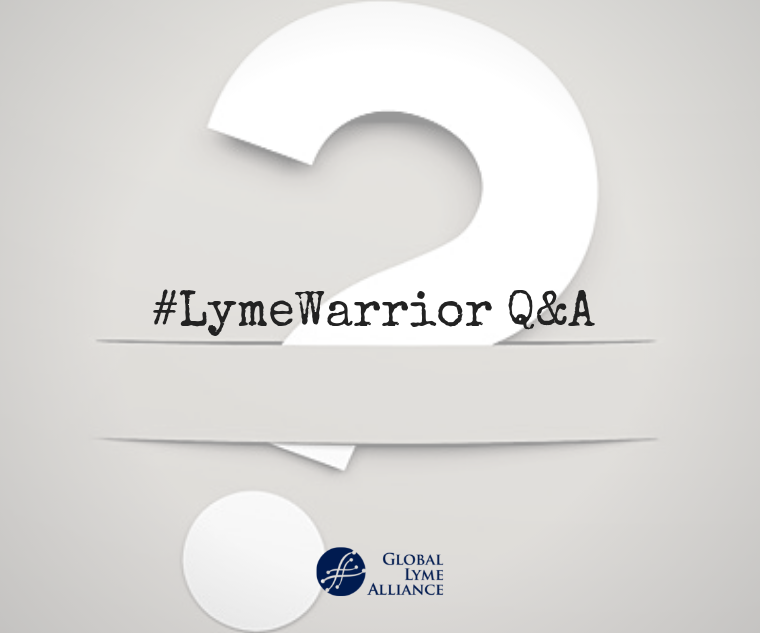
by Jennifer Crystal
Every few months, Jennifer Crystal devotes a column to answering your questions. Do you have a question for Jennifer? If so, email her at lymewarriorjennifercrystal@gmail.com.
Why do certain Lyme tests show positive bands and others don’t? How do I know which to believe?
Unlike other illnesses for which there is a definitive, fool-proof diagnostic test, Lyme tests are far less clear or accurate A common myth about Lyme disease is that if you test negative, you don’t have it. In fact, you might. First, there are different types of Lyme disease tests, all of which measure only for antibodies against Lyme, not for the actual bacteria. The two most common tests are the ELISA and the Western Blot. Though the Western Blot is more accurate (but still only 80% at even the best labs), many doctors only use it if an ELISA is also positive, and those tests are only 50% accurate. It sounds like you did have a Western Blot, which tests for reactivity against 10 different proteins (bands) found on the Lyme bacteria. According to the CDC, five of these bands must be positive in order for an overall test to be considered positive. Here’s the important piece that many people don’t know: these stringent criteria were never meant to be used for diagnostic purposes. It was originally designed for surveillance purposes. The CDC states, “This surveillance case definition was developed for national reporting of Lyme disease; it is not intended to be used in clinical diagnosis.” [i] Yet many doctors use it as exactly that, so symptomatic patients with three or four positive bands are told they don’t have Lyme disease. Additionally, it’s important to note that certain labs test for more specific bands than others. Your doctor may have used one of these labs, whereas another test may have been less sensitive. You also may have had antibodies against Lyme built up at the time of one test, and not at the time of another. Because Lyme disease testing is variable and faulty, it can be used to support a clinical diagnosis, but should not be the sole determinant of whether a person has Lyme. Instead, the patient should be evaluated by a Lyme-Literate Medical Doctor (LLMD) who can make a clinical diagnosis based on symptoms and medical history. For more on Lyme disease testing and diagnosis, please visit: https://globallymealliance.org/about-lyme/diagnosis/testing/.
Has an anti-inflammatory diet become a permanent lifestyle for you?
I have mentioned an anti-inflammatory diet in a few of my blog posts, and I will talk more about this lifestyle in an upcoming post. In the meanwhile, the answer to this specific question is yes. When a doctor makes a recommendation, be it medication or lifestyle change, the first question patients usually ask is, “how long?” We are used to acute infections that come with short-term treatments: sinus infections or bronchitis that can be cleared with a short course of antibiotics, and perhaps some short-term dietary adjustments while on that medication. With Lyme disease, unless it is a clear-cut case that is caught and treated early, the likelihood is that the disease has entered a later stage and will require longer treatment. Even 10-20% of clear-cut cases lead to persistent symptoms. When a patient has been sick for a long time, it can take a long time for them to get well. The whole body needs to heal from collateral damage caused by the illness or medication, whether that’s nutritional depletion or deconditioned muscles. The question then shifts from “how long?” to “how can I best support my body in ongoing healing?” For me, this has meant sticking to an anti-inflammatory diet as part of a broader health plan that includes medications, supplements, and adjunct therapies. For as long as my body is wrestling tick-borne illnesses—even when I’m in remission—I will stick to the diet, to help avoid flare-ups.
Does the Global Lyme Alliance match patients with support people?
Yes! When going through a complex illness, it can be really helpful to have the support of someone who’s been there before. Support groups are good but can be overwhelming when you’re really sick. One-on-one support can feel more manageable and direct. Therefore, Global Lyme Alliance offers the Peer-to-Peer Mentor Program, a free resource that connects Lyme patients, caregivers, and family members with someone who can lend support and answer questions. This program is meant to inspire members of the tick-borne disease community by providing support that will keep both the peer mentors and the people they are assisting moving forward in their individual journeys. You will be matched with a person with a similar profile to connect and exchange information and support. Peer mentors are available to communicate by phone, email, or video chat. Sign up today!
[i] https://wwwn.cdc.gov/nndss/conditions/lyme-disease/case-definition/2011/
For more blogs, click here

Jennifer Crystal
Writer
Opinions expressed by contributors are their own. Jennifer Crystal is a writer and educator in Boston. Her work has appeared in local and national publications including Harvard Health Publishing and The Boston Globe. As a GLA columnist for over six years, her work on GLA.org has received mention in publications such as The New Yorker, weatherchannel.com, CQ Researcher, and ProHealth.com. Jennifer is a patient advocate who has dealt with chronic illness, including Lyme and other tick-borne infections. Her memoir, One Tick Stopped the Clock, was published by Legacy Book Press in 2024. Ten percent of proceeds from the book will go to Global Lyme Alliance. Contact her via email below.